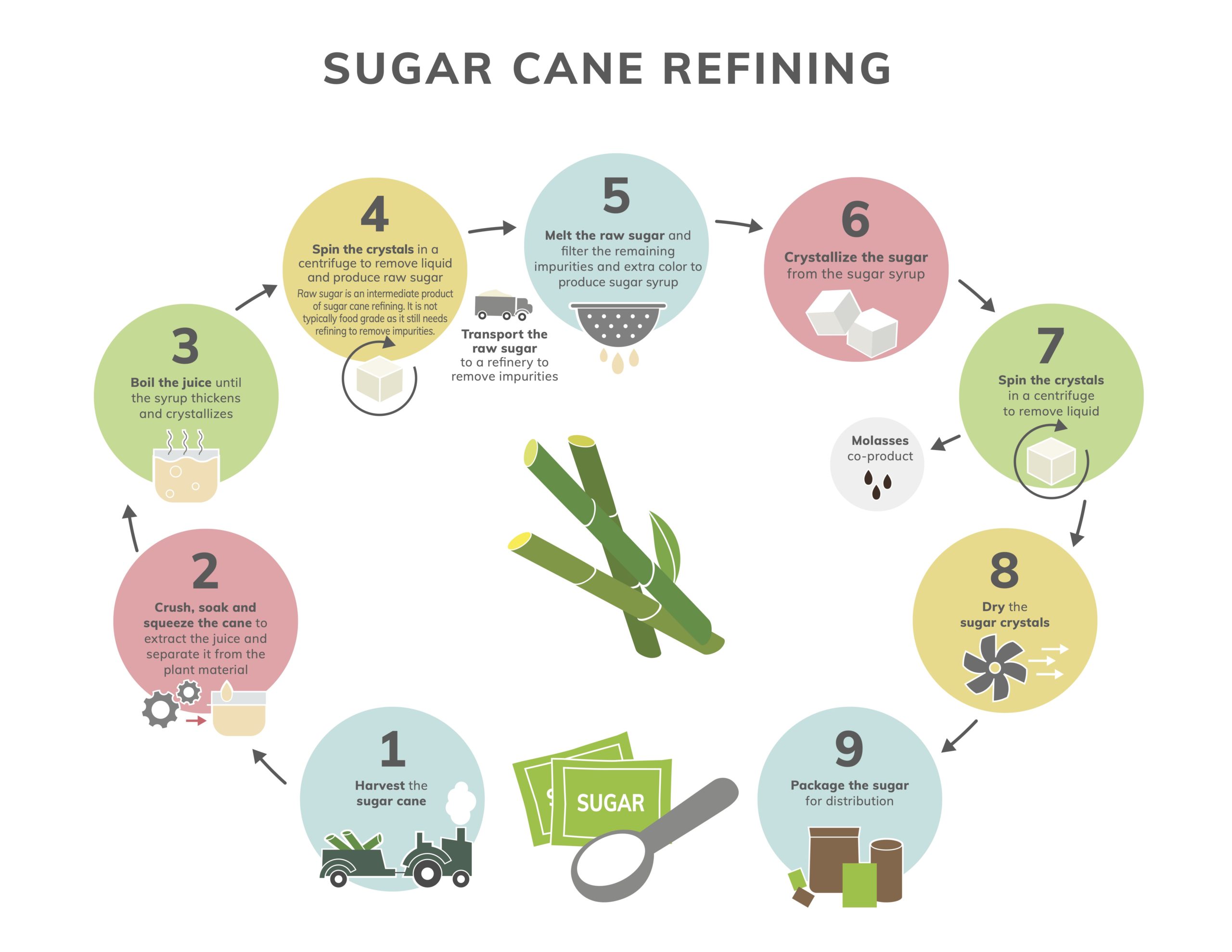High-grade Cane Sugar Processing Chemicals: Trustworthy and Safe
High-grade Cane Sugar Processing Chemicals: Trustworthy and Safe
Blog Article
Maximizar Rendimientos Y Minimizar Costos: Estrategias Avanzadas Para La Optimización Química Del Procesamiento De Azúcar De Caña
In the world of cane sugar processing, the quest of making best use of yields while simultaneously lessening costs stands as a formidable difficulty that needs a strategic blend of sophisticated chemical optimization strategies. The ins and outs of this endeavor explore the core of performance, where every element of the process plays a critical duty in accomplishing optimal results. By exploring the details of chemical analysis, enzyme use, pH control, filtration, and distillation approaches, a landscape rich with possibilities for enhancement and advancement arises. Among this intricate internet of techniques lies the assurance of opening untapped potential and reinventing the really significance of sugar manufacturing. Cane Sugar Processing Chemicals.
Chemical Evaluation for Efficiency
Chemical analysis plays a pivotal duty in enhancing the performance of sugar cane processing by providing important insights right into the composition and homes of the raw materials. By carrying out thorough chemical evaluations on sugar walking cane examples, cpus can determine the specific concentrations of sucrose, sugar, fructose, and other elements existing in the raw product. This information is essential for enhancing the various stages of the sugar walking cane processing chain, from crushing to formation.
Moreover, chemical evaluation allows processors to determine impurities such as natural acids, healthy proteins, and minerals that can influence the high quality and return of the final sugar product. By measuring these impurities, processors can execute targeted strategies to get rid of or alleviate their impacts, inevitably improving the overall performance of the handling plant.
Additionally, chemical analysis promotes the monitoring of process parameters such as pH, temperature level, and thickness, permitting cpus to make real-time modifications to make certain optimal conditions for sugar removal and crystallization. On the whole, a comprehensive understanding of the chemical composition of sugar walking stick is important for maximizing yields, decreasing costs, and preserving high product top quality in the sugar production sector.

Enzyme Usage for Enhanced Returns
With a critical strategy to enzyme use, sugar walking cane cpus can significantly boost their yields while keeping functional efficiency in the production process. Enzymes play an essential function in sugar cane handling by breaking down intricate carbs right into less complex sugars, hence boosting the general sugar removal effectiveness. By including particular Click Here enzymes tailored to target the different components of sugar walking cane, such as cellulose and hemicellulose, processors can enhance the launch of sugars during extraction.
Enzyme application offers the advantage of making best use of sugar yields from the raw product while reducing the energy and resources needed for handling. Through cautious option and application of enzymes, sugar cane cpus can enhance their operations to achieve higher returns and productivity.
Ph Control for Optimal Processing
Enzyme application for enhanced returns in sugar walking stick handling lays the foundation for addressing the vital element of pH control for optimum handling efficiency. Keeping the ideal pH level throughout numerous phases of sugar walking cane handling is crucial for maximizing returns and reducing costs. By carefully checking and changing the pH degrees at different handling steps, sugar walking stick cpus can enhance sugar healing prices, lower chemical use, and maximize the general production process.
Advanced Filtering Techniques
Implementing sophisticated purification strategies in sugar walking stick processing enhances the efficiency and purity of the last product through improved splitting up techniques. By including sophisticated purification technologies, such as membrane filtering and triggered carbon filtering, sugar walking cane processing plants can achieve higher degrees of sugar recuperation and enhanced quality assurance.

Triggered carbon filtration is one more sophisticated strategy that helps in check that the elimination of colorants, off-flavors, and recurring pollutants from sugar cane products. By using triggered carbon's adsorption properties, this filtering approach improves the clarity and taste of the sugar, fulfilling the high requirements required by customers and industry regulations.
Energy-Efficient Purification Approaches
Energy-efficient distillation methods are crucial for optimizing the sugar walking stick processing sector's energy consumption while preserving top notch item standards. Traditional distillation processes can be energy-intensive, causing greater manufacturing prices and ecological effects (Cane Sugar Processing Chemicals). Carrying out energy-efficient purification approaches, such as vacuum purification or molecular distillation, can significantly reduce power demands while boosting overall process performance
Vacuum purification entails decreasing the stress within the purification system, which reduces the boiling factor of the fluid mix being processed. This decrease in boiling factor decreases the energy needed i thought about this for evaporation, leading to energy savings compared to standard distillation approaches.
On the various other hand, molecular purification utilizes brief course purification techniques under high vacuum conditions to separate substances based upon their molecular weight. This method is particularly efficient for heat-sensitive substances, as it operates at lower temperatures, minimizing energy usage and preserving item high quality.
Verdict

Report this page